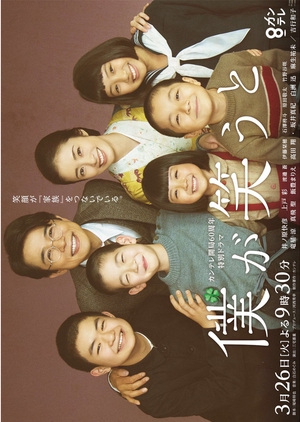Boku ga Warau to (2019)
Other name: When I Laugh
Country: Japan
Genres: Asian Historical Drama, Asian Life Drama, Asian Family Drama, Asian War Drama
Date aired: Mar 26, 2019
Summary:
One spring day, an elderly woman who has been confined to her hospital bed, summons her four grandchildren including Emi and Shinichi and starts talking to them about her parents and siblings. The family she grew up in 70 years ago was quite unlike any other family. Back in 1937 in Osaka, Suzuki Shigesaburo was an associate professor at Osaka University of Science and a botanist. Shigesaburo and his cheerful, gentle wife of 10 years, Seiko, were not blessed with children. However, he accepted this and the couple got along well. Nevertheless, Seiko’s desire to become a mother did not go away. A farewell party for Kazuya, the son of Shigesaburo’s elder sister, Osawa Noriko, who was being posted to Manchuria, reinforced her strong desire to have children. Several days later, Seiko saw children playing in the garden of an orphanage run by Mamiya Kimiko and discussed the adoption of orphans with Shigesaburo. Although he initially expressed a lack of confidence in raising children, her eagerness overwhelmed him and they adopted Kota as their child. While Seiko treated Kota kindly, Shigesaburo remained awkward but gradually learned to scold and praise the boy, and grow as a father. From someone who lived only for research, Shigesaburo found a new purpose in life and his world completely changed. He only had to laugh for Kota to laugh. This quiet man who hardly expressed his feelings, smiled more and more. And then one day, he mumbled that maybe their son would be happy if he had siblings. Seiko responded that they could get that done quickly. Six years later, the Suzukis had become a big family with five children, Kota, Setsuko, Kensaku, Toranosuke and Tomeko. Before long, Shigesaburo’s research assistant Yoshida Shiro received draft papers and the Pacific War also affected Shigesaburo’s surroundings. Life for the Suzukis became increasingly difficult. Even so, Shigesaburo and Seiko kept on smiling and so did their children. However, the war steadily cast a shadow on the family’s future …
Hot on KissAsian:
- Don't spoil content of next episodes.
=> Watch asian drama and Asian drama online at kissasian
boku ga warau to 2019 kissasian, kissasian boku ga warau to 2019, watch boku ga warau to 2019 online free

From 2012 - 2024 KissAsian - Free asian movies online. Copyrights and trademarks for the asia drama, and other promotional materials are held by their respective owners and their use is allowed under the fair use clause of the Copyright Law.
Sitemap | kiss asian | DMCA | kiss asian | asian drama | hong kong drama | korea movies | thailand drama
 Please
Please  Please
Please  Watch Boku ga Warau to (2019) Episode Full
Watch Boku ga Warau to (2019) Episode Full